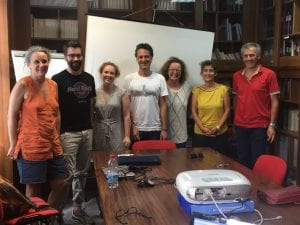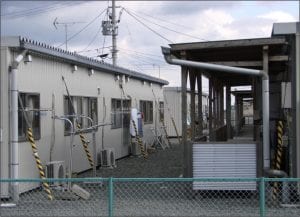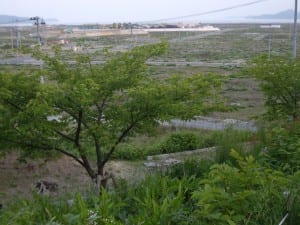More data needed for better earthquake hazard and risk calculations
By Joanna P Faure Walker, on 6 November 2018
New research demonstrates the importance of having detailed measurements at multiple sites along a fault of how fast the fault is moving and how the surface orientation of the fault changes. To access the full paper click here.
Why do we need fault measurements?
Measurements of fault slip rate and the geometry of the fault (it’s 3d orientation) can be used to calculate earthquake recurrence intervals to give probabilities of how likely earthquakes of different magnitudes are to occur. We also need these measurements to model how much ground shaking there will be at given locations. Hazard maps of expected ground shaking can be used to inform building codes and identify where buildings including homes and schools might need retrofitting to improve their resistance to earthquake shaking.
There are other methods available for creating earthquake hazard maps, such as using historical records of earthquake shaking. However, these records unlikely go back far enough in time to capture all faults capable of hosting large earthquakes because some faults will not have hosted earthquake within the time period covered by such records. Therefore, the hazard from some faults would be missing in hazard maps based solely on historical seismicity leading to underestimations in earthquake hazard.
What new insights have been revealed in the research publication?
The paper, entitled “Variable fault geometry suggests detailed fault slip rate profiles and geometries are needed for fault-based probabilistic seismic hazard assessment (PSHA)” demonstrates that relying on only one or a few measurements of how fast the fault is moving along a fault and projecting these measurements along the entire fault may lead to underestimating the uncertainty in the earthquake hazard calculations. Crucially, there may be locations where the hazard is underestimated, meaning people could be at more risk than suggested by simpler models (the converse is also possible). Therefore, earthquake hazard assessments based on fault parameters need to either use detailed measurements including measurements of how fast the fault is moving at multiple sites along the fault or to incorporate how the lack of such data increases the uncertainty in calculated earthquake hazard assessments.
Why are detailed measurements not being already used?
In many regions it is difficult to constrain the fault slip rate (how much the fault has moved in a given time) or throw rate (vertical component of slip rate) along a fault at even one location, let alone several. However, there are regions where this is possible so as more data is collected, this detail should help to improve earthquake hazard assessments both in those regions and worldwide.
Where can I find out more?
Faure Walker J., Visini F., Roberts G., Galasso C., McCaffrey K., and Mildon Z., (2018) Variable fault geometry suggests detailed fault slip rate profiles and geometries are needed for fault-based probabilistic seismic hazard assessment (PSHA), Bulletin of the Seismological Society of America, doi: 10.1785/0120180137
The Fault2SHA Working Group is an ESC (European Seismological Commission) group of researchers in both universities and civil protection authorities collaborating to increase incorporation of fault data in seismic hazard assessments and to improve our understanding of how such data should be used.
 Close
Close











